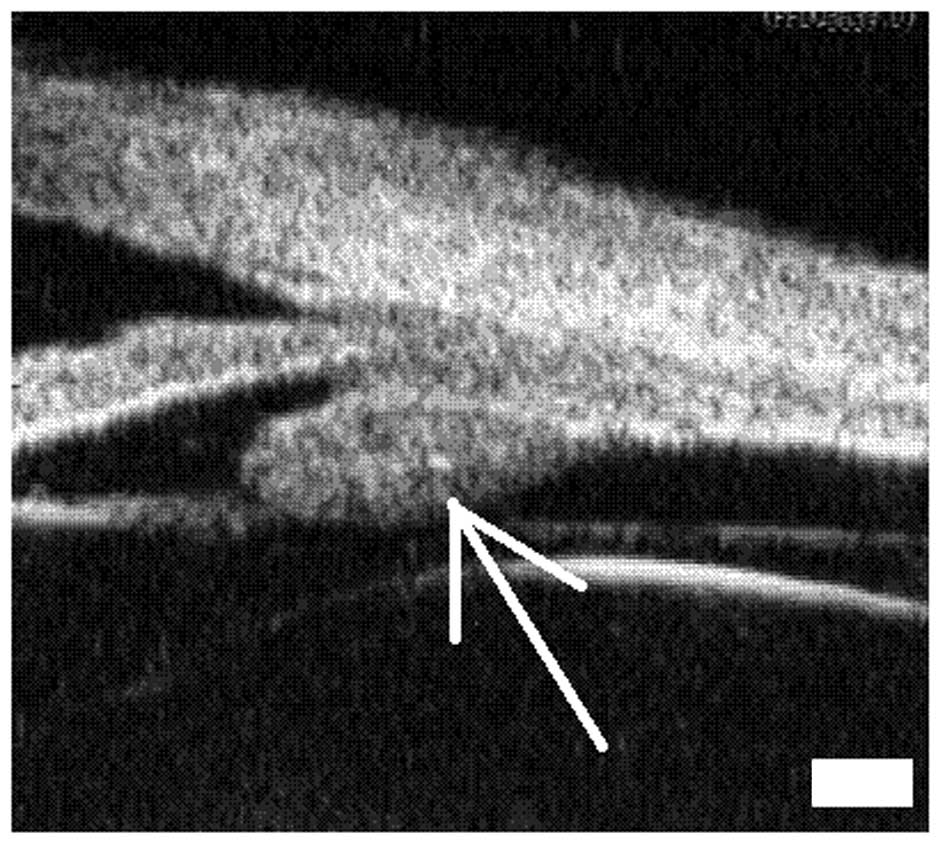Ultrasound biomicroscopy of hyperpressurized eyes following pars plana vitrectomy
- Authors:
- Published online on: July 5, 2013 https://doi.org/10.3892/etm.2013.1206
- Pages: 769-772
Metrics:
Total
Views: 0 (Spandidos Publications: | PMC Statistics:
)
Total PDF Downloads: 0 (Spandidos Publications: | PMC Statistics:
)
Abstract
Early elevated intraocular pressure (IOP) following pars plana vitrectomy is a common complication of vitreoretinal surgery and severe pressure elevation may result in visual loss. To investigate the mechanism of IOP elevation following pars plana vitrectomy, a retrospective review of 119 patients (132 eyes) who had undergone vitreoretinal surgery was performed. Ultrasound biomicroscopy (UBM) was used to observe the changes in the structure of the anterior segment following vitrectomy and to compare various parameters pre- and postsurgery. The UBM examination revealed inflammation within the anterior chamber and hyphema with increased IOP. In certain patients, the iris had adhered to the trabecular meshwork and the anterior chamber angle was closed. Cyclodialysis involving the pars plicata and iris was also observed. Furthermore, silicone oil emulsification in the anterior chamber angle and posterior chamber presurgery were noted in certain cases. Edema and forward rotation of the ciliary body resulted in the closure of the anterior chamber angle. The measured parameters indicated that the anterior chamber became shallower and that the anterior chamber angle was narrowed in phakic eyes with elevated IOP. Eyes with elevated IOP and intraocular lenses were not observed to be different from phakic eyes with elevated IOP. This may be due to the fact that an eye with an intraocular lens is thinner than a phakic eye. This study suggests that UBM examination is useful for investigating the pathogenesis of elevated IOP following vitrectomy, and provides a theoretical basis.















